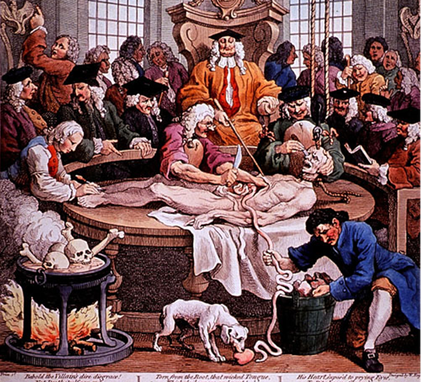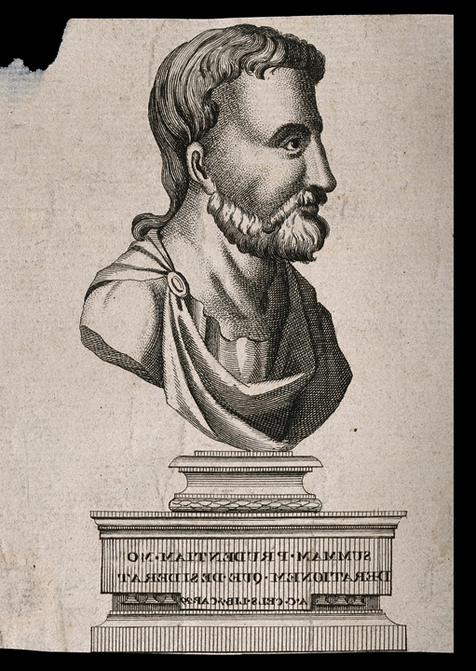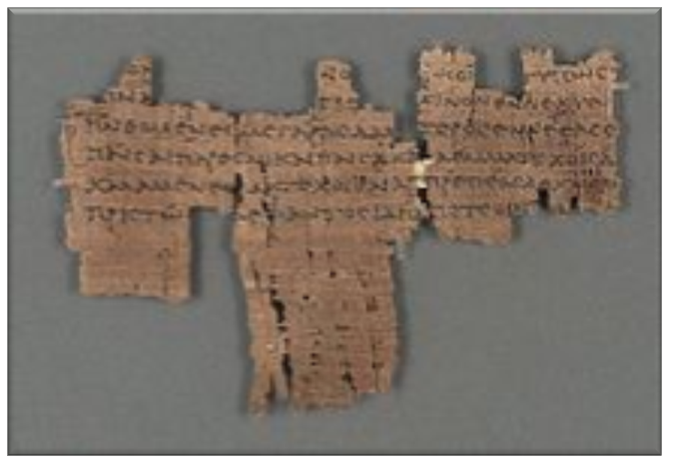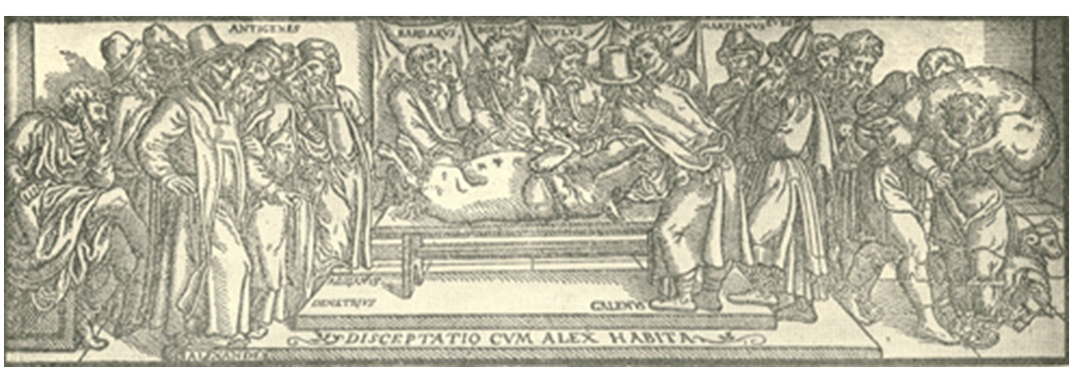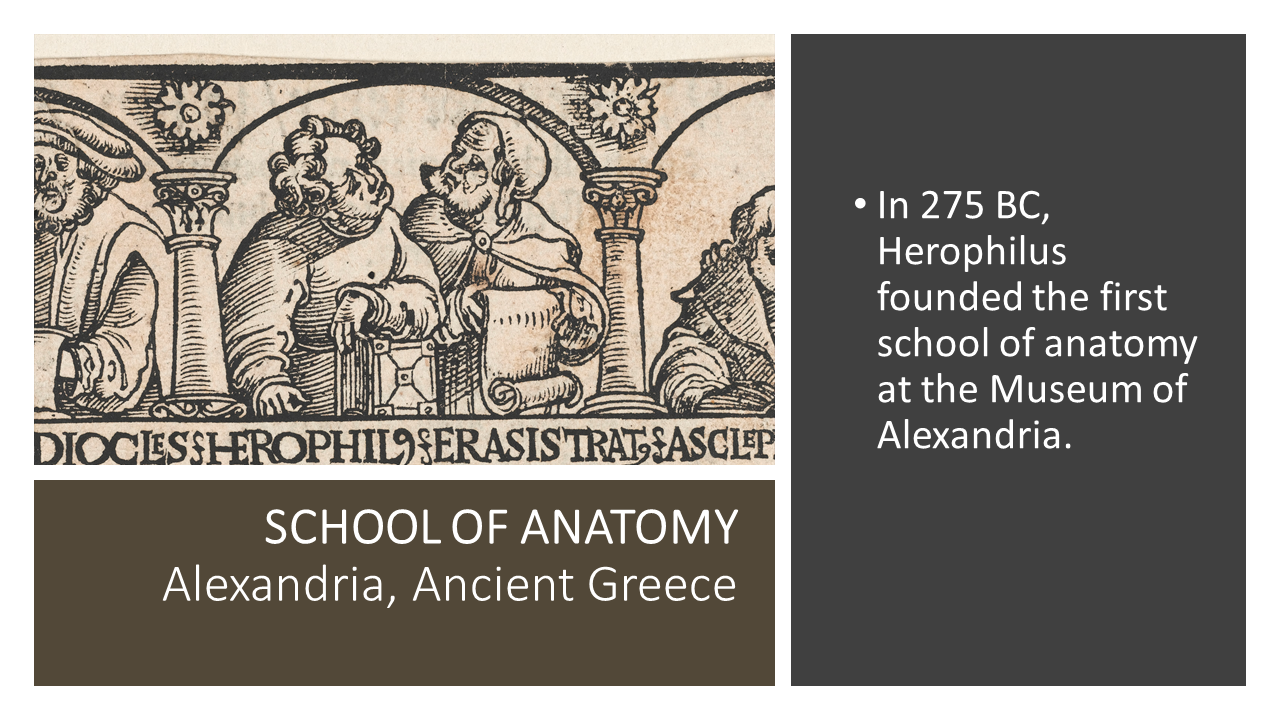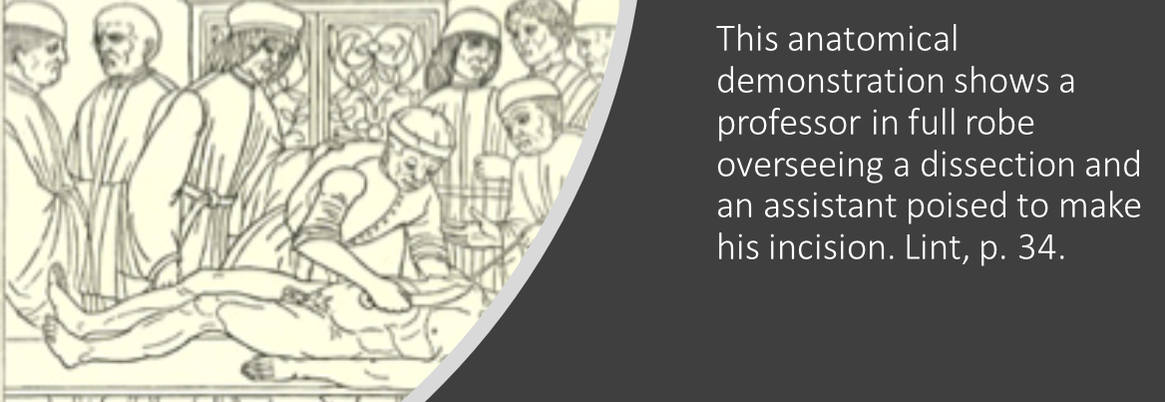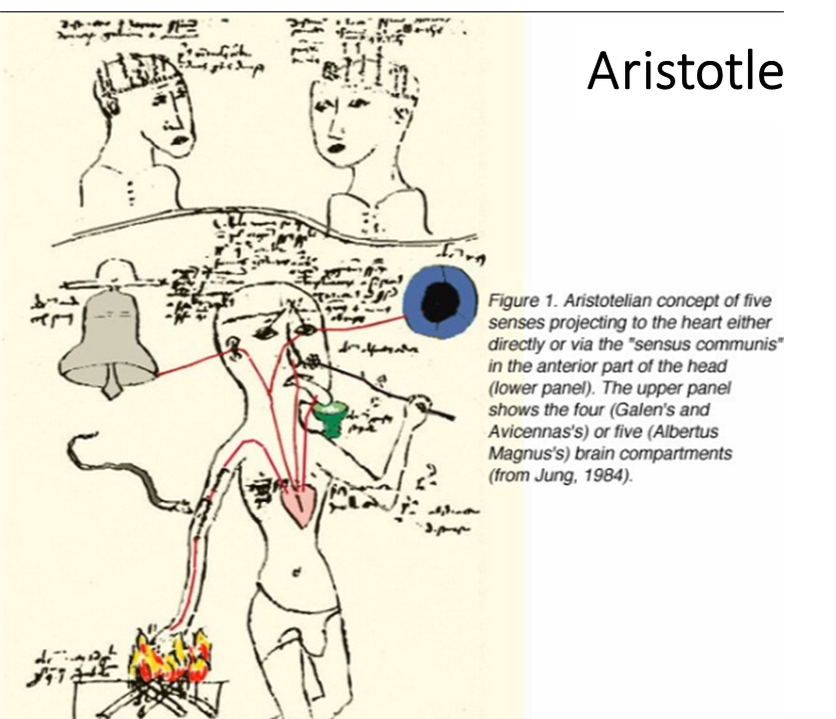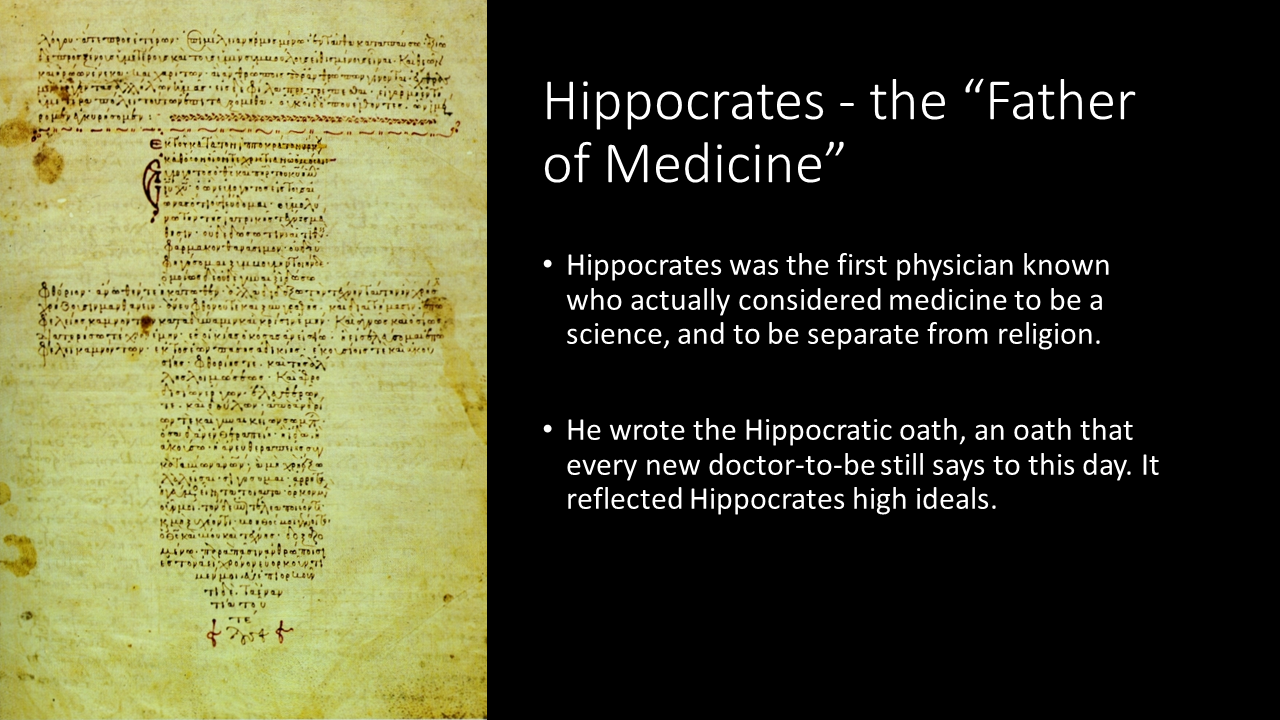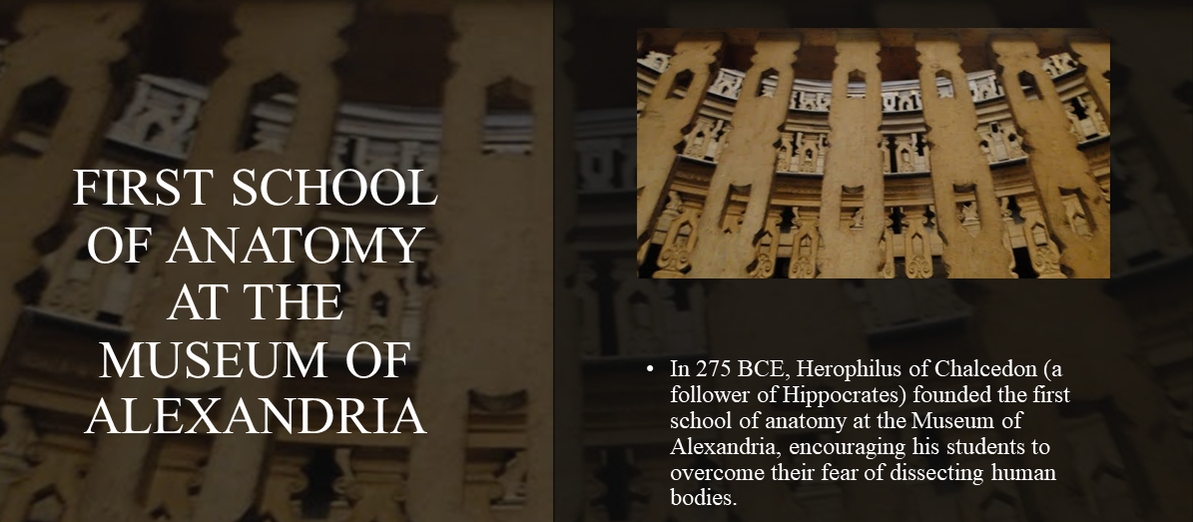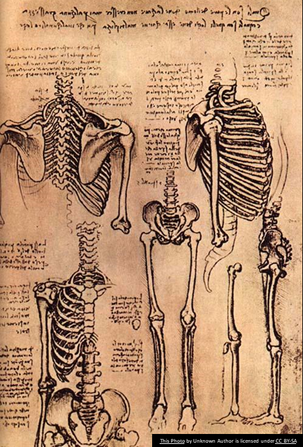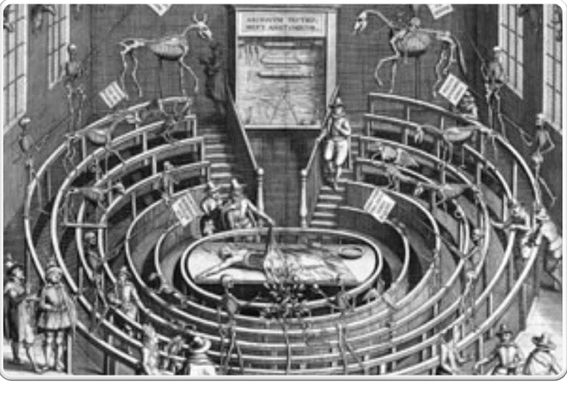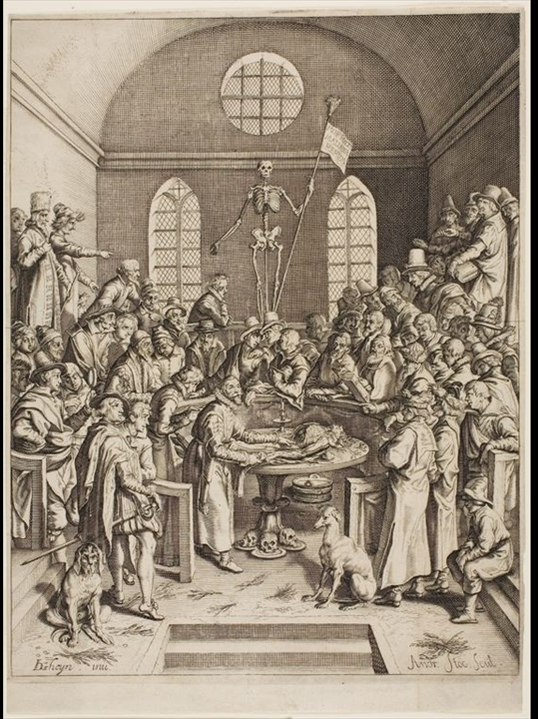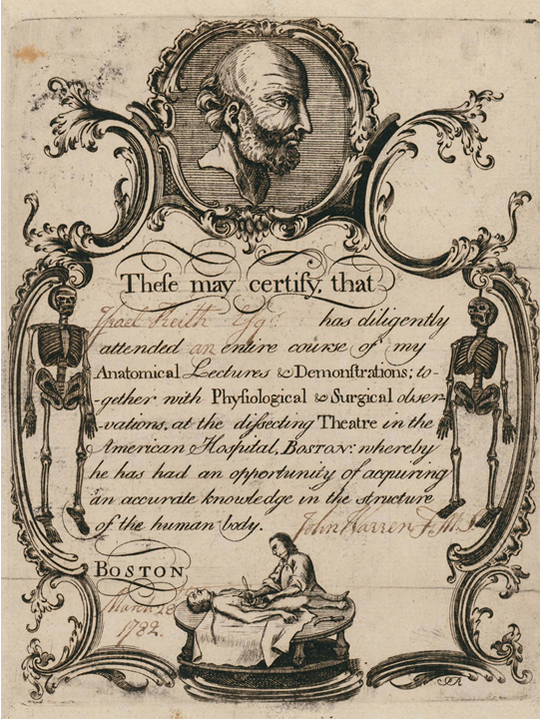A History of Anatomy
|
|
|
Ancient Egypt

The Ancient Egyptians are responsible for naming most of the major organs and external structures of the body. Texts written as long ago as 3000 B.C. used words such as… "brain" ”meninges” “cerebrospinal fluid”
|
The taboo against dissecting the bodies of the dead goes back many centuries; it was prohibited by both ancient Greek and Roman religions. Since ancient times, The dissection of human cadavers has been controversial.
Human dissection was see as evil by certain religions and belief systems. Dissection was considered desecration. it was prohibited by both ancient Greek and Roman religions. |
First known dissection between 600 and 500 BC.
The first recorded medical dissection of the human body was performed by the Greek philosopher Alcmaeon. |

Anatomy taboo?
The interior of our bodies is hidden to us. What happens beneath the skin is mysterious, fearful, amazing. Many religions saw human dissection as a sin (desecration of the body). anatomical studies were banned in many societies. Very few illustrations existed and not much knowledge about anatomy was passed on.
The interior of our bodies is hidden to us. What happens beneath the skin is mysterious, fearful, amazing. Many religions saw human dissection as a sin (desecration of the body). anatomical studies were banned in many societies. Very few illustrations existed and not much knowledge about anatomy was passed on.
The brain was not always held in high regard.
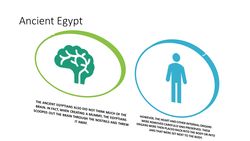
•The ancient Egyptians also did not think much of the brain. In fact, when creating a mummy, the Egyptians scooped out the brain through the nostrils and threw it away.
|
•However, the heart and other internal organs were removed carefully and preserved. These organs were then placed back into the body or into jars that were set next to the body.
They left only the heart in place, believing it to be the center of a person's being and intelligence. The other organs were preserved separately, with the stomach, liver, lungs, and intestines placed in special boxes or jars today called canopic jars. These were buried with the mummy.
Animals were also mummified, but the brain was just trash. |
The Greek philosopher, Aristotle, thought the heart, not the brain, was the location of intelligence and thought.
In 180 AD., the Greek physician Galen followed Celsus's advice when he first published the results of his work on anatomy, based on two clandestine (secret) dissections.
Galen dissecting a pig
2nd Century - Galen’s dissection of a pig
Shown here is the dissection of a swine with more animals being bundled in on the right. Lint, p. 22.
Galen dissecting a pig
2nd Century - Galen’s dissection of a pig
Shown here is the dissection of a swine with more animals being bundled in on the right. Lint, p. 22.
SCHOOL OF ANATOMY
Alexandria, Ancient Greece
In 275 BC, Herophilus founded the first school of anatomy at the Museum of Alexandria.
Alexandria, Ancient Greece
In 275 BC, Herophilus founded the first school of anatomy at the Museum of Alexandria.
This anatomical demonstration shows a professor in full robe overseeing a dissection and an assistant poised to make his incision.
The Hippocratic Corpus catalogued in Alexandria’s renowned library was a collection of works by Hippocrates himself and successor physicians practicing at his school on the eastern Aegean island of Kos.
Aristotle was named the “Father of Comparative Anatomy and Physiology”.
However, Aristotle believed that the brain's function was to act as a radiator that cooled the heart by secreting “phlegm”. Aristotle also beleived that the arteries contained only air. Future discoveries debunked this theory of Aristotle.”
|
Hippocrates - the “Father of Medicine” Hippocrates was hailed as the “Father of Medicine”. He gathered data and conducted experiments to show that disease was a natural process (not a curse). He also showed that the symptoms of a disease were caused by the natural reactions of the body to the disease process. Hippocrates - the “Father of Medicine” Hippocrates was the first physician known who actually considered medicine to be a science, and to be separate from religion. |
“Anatomy is the foundation of medicine,” the classical Greek physician Hippocrates declared, “and should be based on the form of the human body.”
Hippocrates is said to have written the Hippocratic oath, an oath that every new doctor-to-be still says to this day. It reflected Hippocrates high ideals. The Hippocratic Oath The Hippocratic Oath was written in ancient Greece in the 5th century BCE, and is a direct inspiration for oaths of office that physicians swear upon entry into the profession today.
FIRST SCHOOL OF ANATOMY AT THE MUSEUM OF ALEXANDRIA
In 275 BCE, Herophilus of Chalcedon (a follower of Hippocrates) founded the first school of anatomy at the Museum of Alexandria, encouraging his students to overcome their fear of dissecting human bodies.
Hellenistic Greece and Human Dissection
The availability of the Corpus in the stimulating intellectual environment of Hellenistic Alexandria likely inspired medical scholars finally to take up the knife and undertake systematic human anatomical studies for the first time in classical history. One of these physician-scholars was Herophilus, who produced the treatise On Anatomy, synthesizing the results of many hundred human dissections.
A Step Backwards: Rome and Anatomical Reversal
|
With the conquest of Alexandria by Rome, the advancements of medicine and science were stopped. Human dissections were outlawed and human dissection again became “taboo”. Anatomical texts were lost and knowledge regressed. Texts were recovered centuries later, but anatomical drawings were all destroyed. |
Dissection and medicine advances decline
The Dark Ages Christian doctrine promises the resurrection of the body, which many thought to be impossible if a body were cut open. Crusaders that dies in battle would be dismembered and boiled to prevent possible dissection.
1163 – Church makes law against human dissections in the hopes of curtailing dismemberments.
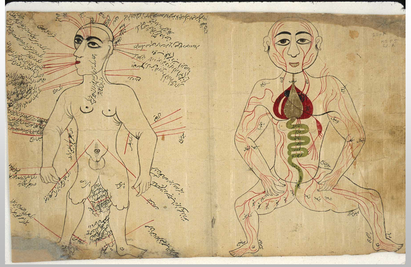
Early prints of anatomy looked very different from anatomical drawings we have now.
Anatomical images were still viewed as taboo, surreal, beautiful or grotesque.
Anatomical images continue to have a profound impact on the human mind. – Perhaps because this shines a light on our own mortality.
Anatomical images were still viewed as taboo, surreal, beautiful or grotesque.
Anatomical images continue to have a profound impact on the human mind. – Perhaps because this shines a light on our own mortality.
The pursuit of knowledge and science was seen as blasphemous and evil.
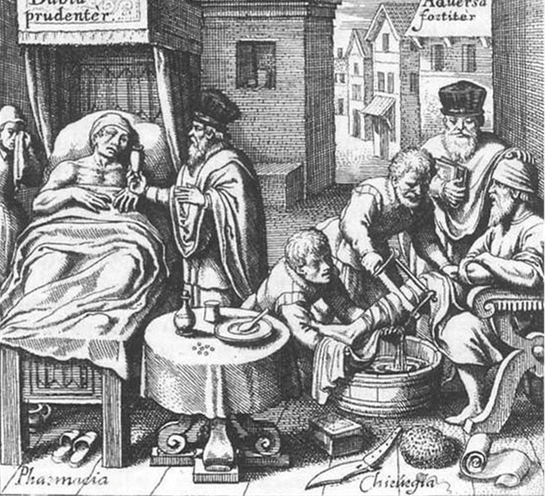
Since illness was thought to be caused by supernatural agents, cures had to be essentially supernatural as well. Every cure was literally miraculous, and these miracles could be effected only by prayer, penance and the assistance of saints. To claim otherwise was heretical and blasphemous. The Christian ideal was that women should die rather than allow themselves to be helped by a physician.
|
Leonardo da Vinci
The Renaissance saw a resurgence in interest in anatomy, in part urged by the studies of such artists as Leonardo da Vinci, who (in 1510) demonstrated the homology of muscular structures in humans and animals -- Leonardo, however, did not publish these drawings in his lifetime. |
|
Criminals and Unclaimed Bodies of the Poor
As human dissections became more numerous, the need for a source of cadavers grew.
As human dissections became more numerous, the need for a source of cadavers grew.
|
Criminals and the unclaimed bodies often satisfied the demand. England in the eighteenth century used the bodies of condemned criminals for medical research.
After public executions, riots would often break out as family members and surgeons fought over the bodies. Sometimes the grabbing and pulling resulted in the bodies losing limbs and heads! |
In 1829, William Burke was hanged in Edinburgh for murdering victims by asphyxiation in order to provide cadavers to physicians.

Riot In April 1788, New Yorkers rioted for three days upon discovering that bodies had been stolen from a graveyard. Five thousand people participated in a three-day riot against surgeons by rushing the hospitals.
|
In 1789, New York passed a law making it possible for doctors to obtain cadavers without resorting to body-snatching. A similar bill was passed in London only in 1832
The Council of Tours in 1163 led to the Church's formulation of a prohibition against human dissections in the hopes of curtailing the practice of dismembering and boiling the remains of Crusaders killed in battle before their shipment home.
|
Vesalius’s Fabrica is a masterpiece of accuracy and a work of extraordinary beauty as well.
|
Andreas Vesalius
Andreas Vesalius was one of the founders of modern anatomy. He was sentenced to death for performing dissections (1564). Andreas began to question classical medical texts and ideas. Historical anatomical texts were written during the time when dissection of humans was been forbidden by Greek and Roman religious law. |
|
Historical texts on human anatomy was formed using animal dissections coupled with a fair amount of “guesswork”. In 1543 he published his masterpiece, De corporis humani fabrica, in seven volumes, providing the first accurate drawings of human anatomy.
The interior of your body is hidden from the world and from you. What we are and what occurs beneath our skin can be to some... MYSTERIOUS... FEARFUL... AMAZING...
Throughout history, many religions viewed human dissection as a sin - a desecration of the body. Anatomical studies were banned in many societies and were held in secret, if at all. Perhaps it reminds us of our own mortality? |
|




